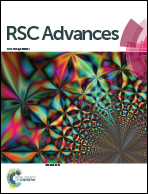Unusual hierarchical structures of micro-injection molded isotactic polypropylene in presence of an in situ microfibrillar network and a β-nucleating agent
Abstract
The microstructural and mechanical properties of isotactic polypropylene (iPP), in situ PET microfibrils, and β-nucleating agent blends obtained from micro-injection molding were investigated via polarized light microscopy, differential scanning calorimetry, scanning electron microscopy, and two-dimensional wide-angle X-ray diffraction. The results indicate that addition of PET microfibrils markedly increases crystallization temperatures, and increases the thickness of the final oriented layer. Introduction of PET microfibrils to β-nucleation agent-nucleated iPP samples leads to formation of oriented β-crystals epiphytic on the surface of PET fibers in the inner region; this feature improves adhesion between the fiber and the matrix and simultaneously improves the strength and toughness of the final PP/0.5/15 microparts (e.g., the tensile strength increased by 12 MPa and the elongation at break increased by 1.2%) compared with those of iPP microparts. Taken together, the results of this study introduce an alternative approach to optimize the properties of MIM parts.


 Please wait while we load your content...
Please wait while we load your content...